| Year-round Resident | |
| Has Nested in Park |
Carolina Wrens are common year-round residents at Monticello Park. They nest in the park and the surrounding neighborhood.
Where to See Them in the Park
You can see Carolina Wrens foraging in the bushes in many parts of Monticello. In the early spring, males pop onto branches and sing. During the late spring, you sometimes can see Carolina Wrens with their young.
Physical Description
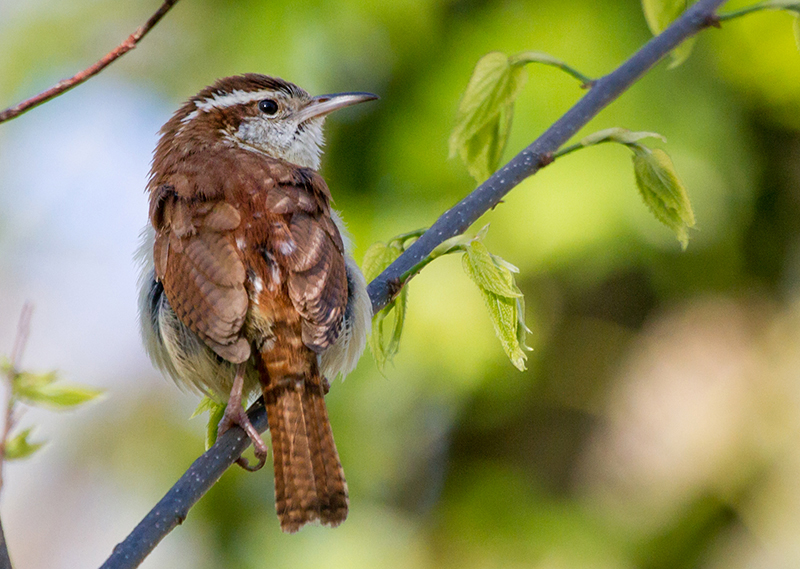
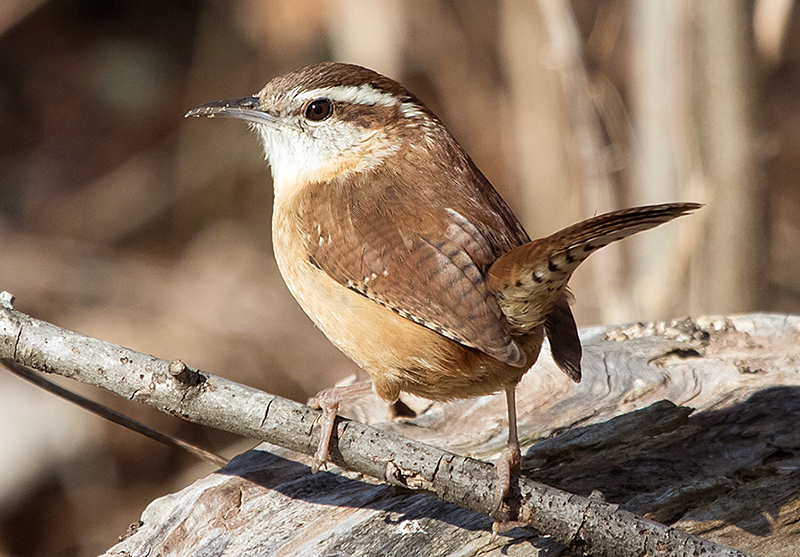
Carolina Wrens are the largest of the three wren species found at Monticello and are a little larger than many of the warblers who visit the park. They have a brown back, buffy underparts, and a prominent white line over the eye. They often cock their tails. The sexes look similar, and adult plumage is the same in the spring and the fall.
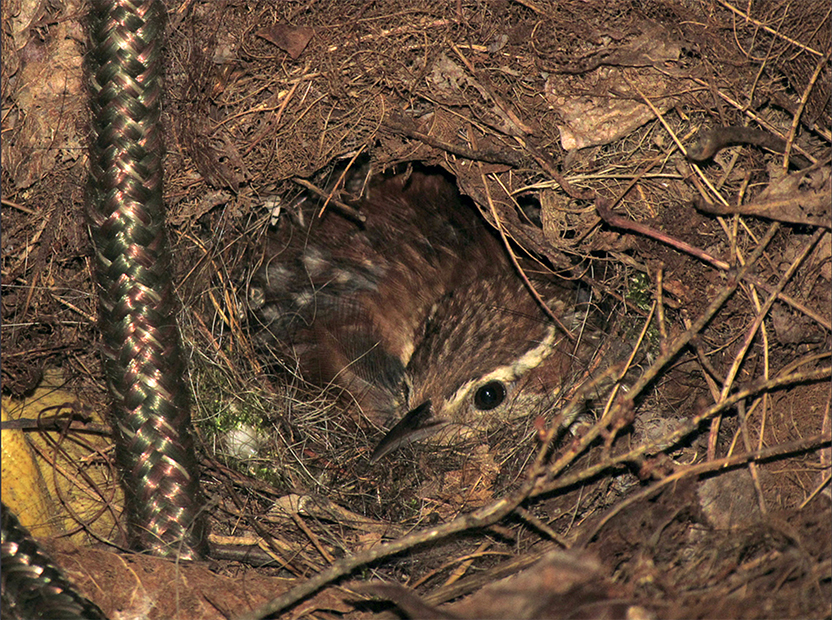
The Carolina Wren nest is a broad cup made of leaves, bark, twigs, moss, and other material. Both the male and the female bring materials for the nest, and the female does most of the finish work on the nest lining. The pair sometimes continues to build the nest after egg laying has begun. The female lays 3 to 7 eggs, and only she incubates them. Incubation lasts 12 to 16 days, and during this period, the male brings food to her.
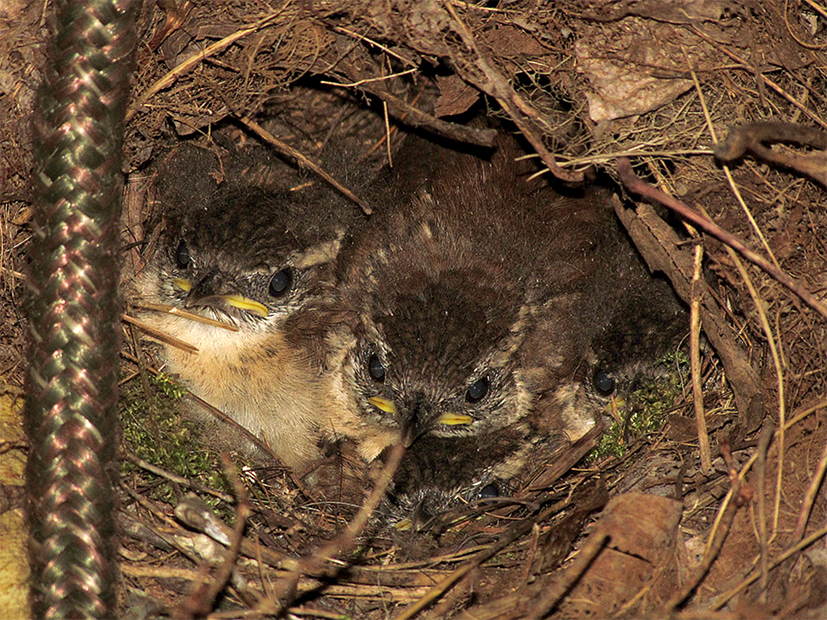
The nestling phase last roughly the same amount of time as incubation. The adults bring food to the young until they are ready to leave the nest.

Some of the fledglings seen at Monticello do not yet have a tail.
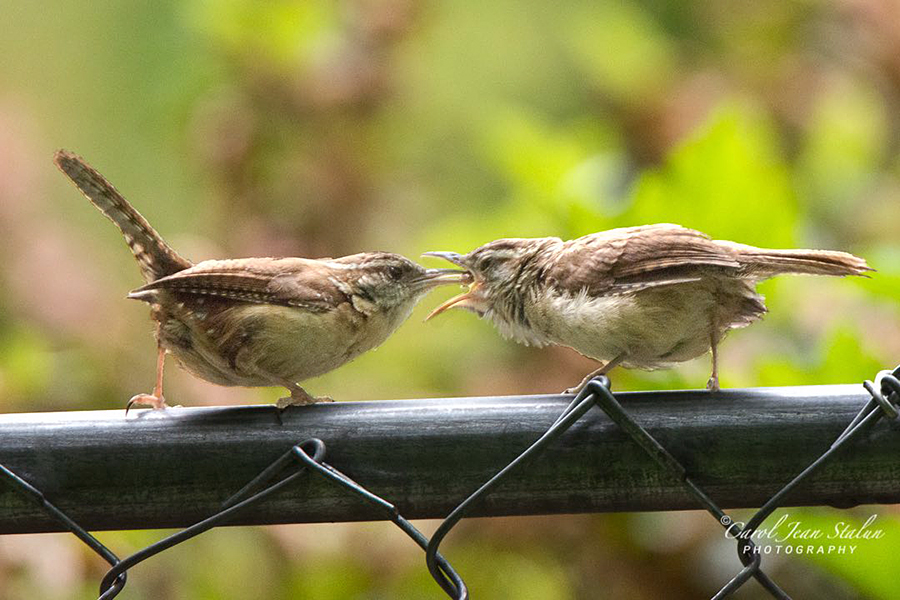
Parents feed their offspring a diet of invertebrates for about two weeks. The offspring are then left to fend for themselves. The parents will raise 1 to 3 broods per year.
Vocalizations

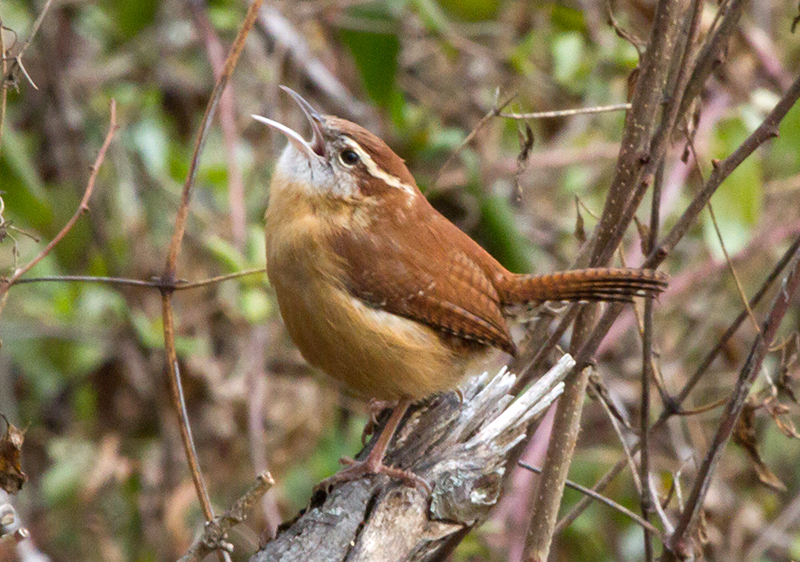

Carolina Wrens are among the loudest singers at Monticello and often will sing from an exposed branch or stick. The song is variable, usually having two- or three-syllable phrases, such as tweedle-tweedle-tweedle or teakettle-teakettle-teakettle. They also have a broad range of call notes, some of which sound harsh and scolding. Males do most of the singing.
Hear the vocalizations of the Carolina Wren.
Notes
Carolina Wrens eat spiders as well as insects, which can cause problems for the wrens (as well as the spiders). A 2011 study found that some Carolina Wrens in Virginia had high levels of mercury in their blood from feeding on spiders throughout the year. Spiders are relatively high on the invertebrate food chain and can contain higher levels of mercury than many plant-eating insects. Because the Virginia wrens do not migrate, they ingest higher levels of mercury than birds who are in the state for only part of the year. The mercury exposure has caused lower reproductive success.
Origin of Names
Common Names: Carolina from its range — Carolina used to be a loose term for the South. Wren from the Anglo-Saxon wraenna, which means wren.
Genus Name: Thryothorus means reed leaping.
Species Name: Ludovicianus means of Louisiana, where the original specimen was found.
Carolina Wren video footage
Return to the Index
